Back in 1930, German archaeologist Günter Raeder excavated the lower part of a statue depicting the figure of the ancient Egyptian pharaoh Ramesses II, also known as Ramesses the Great. He is one of the most famous figures in the history of Ancient Egypt – he ruled the empire from 1279 to 1213 BC, making him one of the longest-reigning pharaohs in history. No one could understand why the ancient statue, the height of which could reach the height of 3-4 people, was split in two. The search for its upper part has been going on for almost 100 years, and now it has finally yielded results. Part of a huge statue depicting the face of Ramesses II was found on the territory of the ancient city of Hermopolis, which today is an open-air museum.
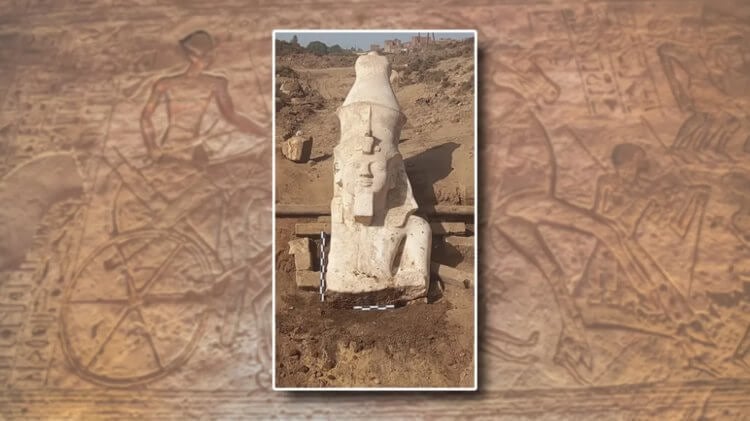
The upper part of the statue of Ramesses II was found in the city of Hermopolis. Image source: IFL Science
Contents
- 1 The ancient city of Hermopolis
- 2 Scientists have found a statue of Ramesses II
- 3 What did Pharaoh Ramesses II do
- 4 Tomb of Pharaoh Ramesses II
The ancient city of Hermopolis
According to the scientific publication IFL Science, the lost part of the statue of Ramesses II was found through the joint efforts of archaeologists from Egypt and the United States. The discovery occurred by chance, during excavations on the territory of the ancient city of Hermopolis, not far from the modern settlement of El-Ashmunein.
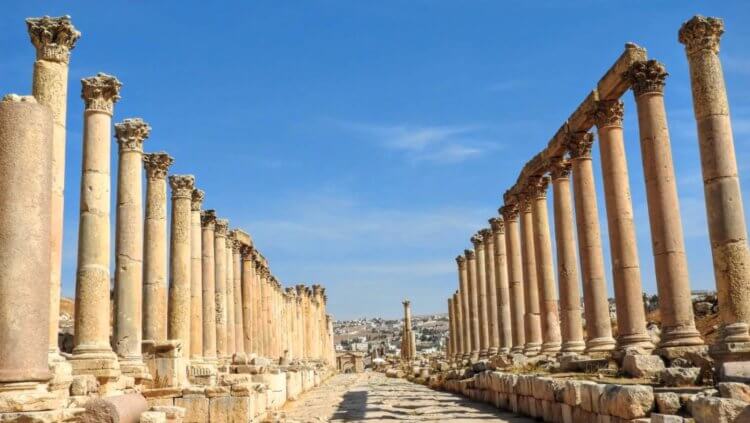
Ruins of the city of Hermopolis in Egypt. Photo source: trip.com
This historical site is located approximately 250 kilometers from the Egyptian capital Cairo. In ancient times, Hermopolis was one of the most important religious centers. The city was the location of the cult center of the god of wisdom and knowledge, Thoth. Today, the ancient buildings have already been destroyed, and on the historical lands there is an open-air museum.
Read also:A lost tomb with a 4,400-year-old mummy of a highly respected man was found in Egypt
Scientists have found a statue of Ramesses II
The upper part of the statue of Ramesses II was found during the search for religious buildings. For many years it lay under layers of sand. After excavation, it turned out that its length is 3.8 meters, that is, if you connect the two parts of the statue, you get a figure approximately 7 meters high.The statue depicts a pharaoh wearing a headdress with the image of a king cobra. The figure is made of limestone, with inscriptions glorifying the pharaoh scratched in hieroglyphs on the back.
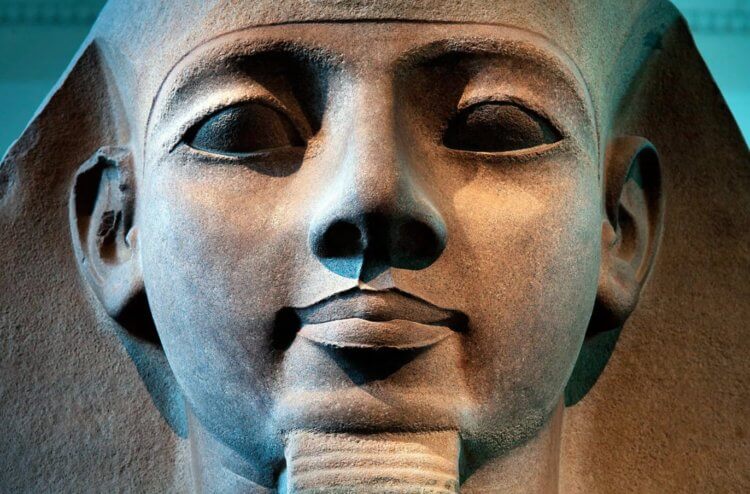
Statues of Ramesses II are scattered throughout Egypt. Image source: history-doc.ru
In addition to the missing part of the pharaoh’s statue, archaeologists managed to find traces of ancient yellow and blue paint. Scientists believe that if these pigments are analyzed, they will be able to find out the exact date of creation of this work of art. The researchers also hope that soil samples mixed with paint will help them understand exactly where the statue was originally formed.
Another interesting discovery:Archaeologists have discovered an unknown ancient Roman city with pigeon farms in Egypt
What Pharaoh Ramesses II did
Ramesses II is considered one of the greatest pharaohs in the entire history of Ancient Egypt for a reason. He was given the honorary title a-nakhtu, meaning “winner.” Monuments of Ramesses the Great of varying sizes and states of preservation can be found in various parts of Egypt.
During his long 90-year life, Ramesses II managed to build many great structures. For example, under his leadership, two ancient Egyptian temples were carved into the Abu Simbel rock on the west bank of the Nile. The great pharaoh also contributed to the construction of the Luxor Temple, which is dedicated to the solar god Amon Ra. He also founded the city of Per-Ramesses, which during his reign was a very important and prosperous place.
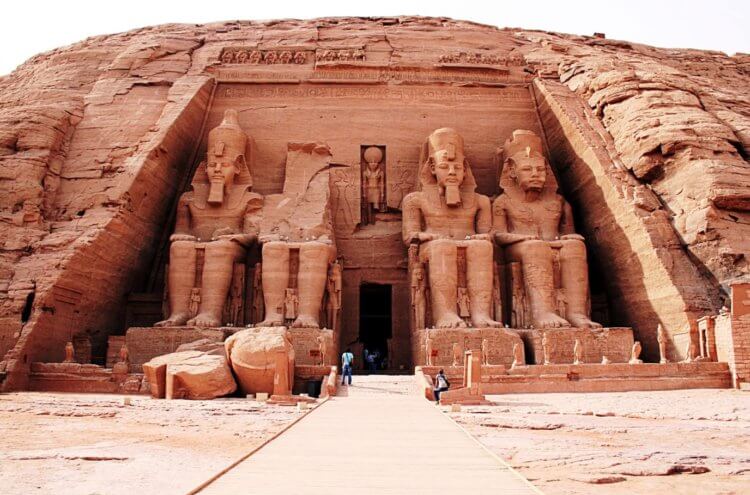
Abu Simbel Rock Temple. Image source: emotoursegypt.com
In addition to the construction of historical structures, Pharaoh Ramesses II is famous for his military victories. He led successful military campaigns against peoples such as the Hittites and Nubians. Thanks to his victories, the power of the Egyptian empire became even stronger. In addition to this, he entered into strong diplomatic relations with some peoples, which also helped strengthen the influence of Ancient Egypt.
Read also:Scientists unravel the secrets of the ancient road that helped build the Egyptian pyramids
p>
Tomb of Pharaoh Ramesses II
The burial place of Ramesses II was first found not by scientists, but by tomb robbers. For many years, robber Abd-el-Rasoul kept the coordinates of his tomb secret until Egyptian authorities forced him to reveal the secret. When scientists entered the pharaoh's tomb, they found a lot of jewelry, but most of the artifacts had already been sold. Fortunately, no one touched the pharaoh's mummy.
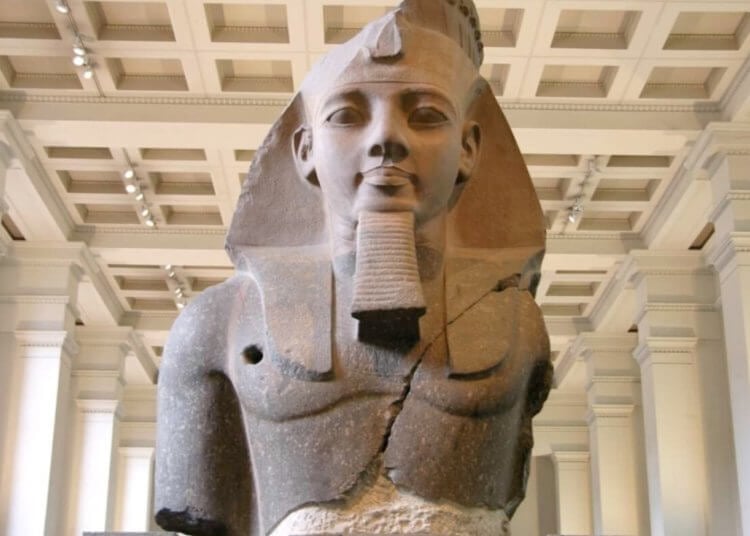
The tomb of Pharaoh Ramesses II was plundered many times. Image source: africabriefing.com
Be sure to subscribe to our Zen Channel. There you will find many other interesting materials!
Thanks to the discovery of the remains of the ruler, scientists subsequently managed to recreate his appearance. As it turned out, Ramesses II, even by modern standards, was a very handsome man. You can see what one of the most successful rulers of Ancient Egypt looked like in the article “Scientists have recreated the face of the most powerful pharaoh 2,300 years after his death.”